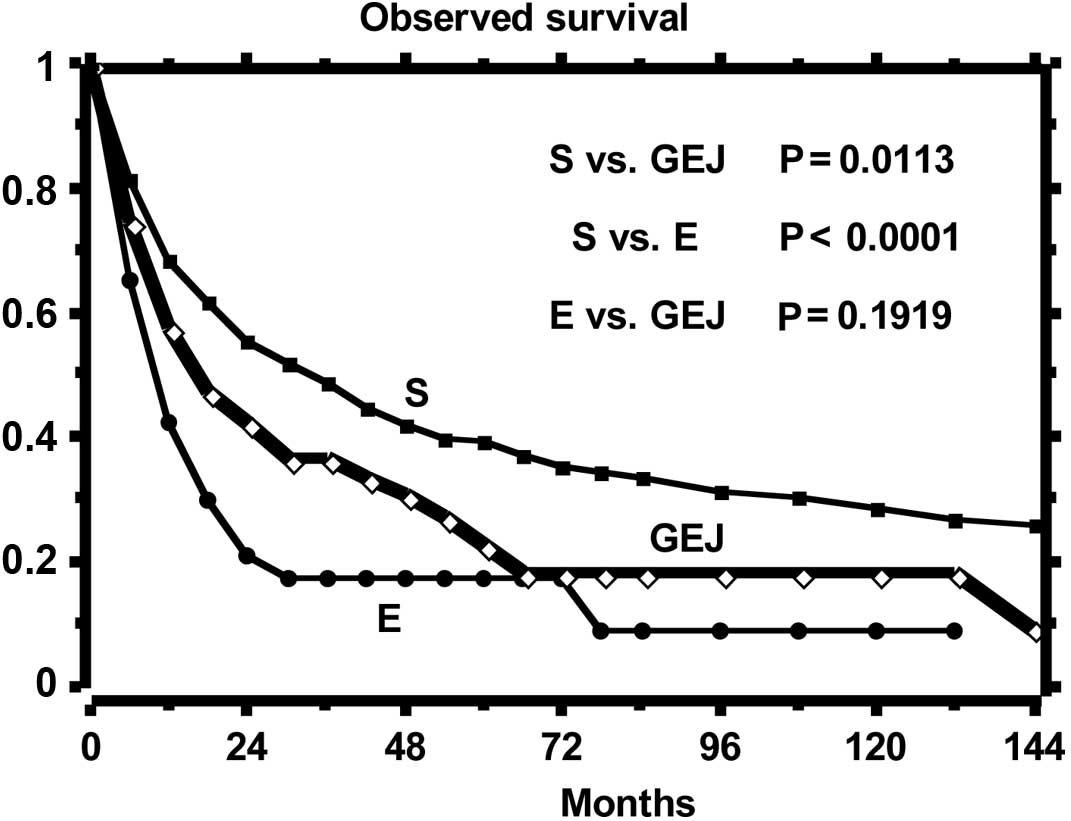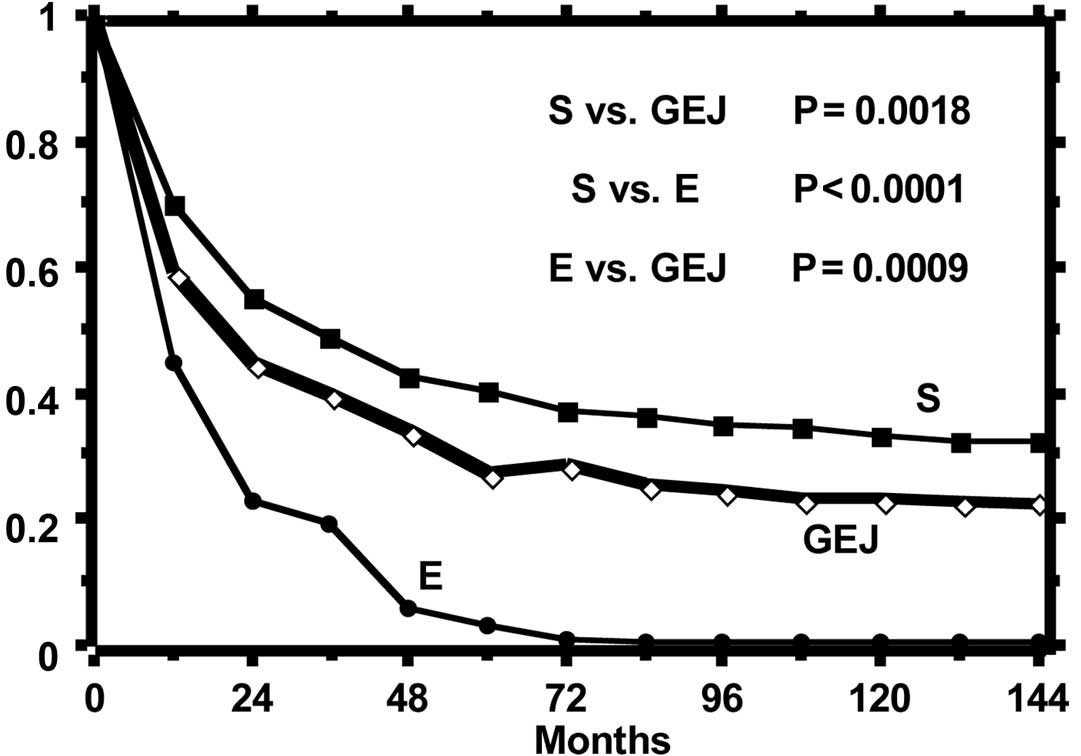Tumors of the gastroesophageal junction have intermediate prognosis compared to tumors of the esophagus and stomach, but share the same clinical determinants
- Authors:
- Published online on: March 21, 2011 https://doi.org/10.3892/ol.2011.278
- Pages: 503-507
Metrics:
Total
Views: 0 (Spandidos Publications: | PMC Statistics:
)
Total PDF Downloads: 0 (Spandidos Publications: | PMC Statistics:
)
Abstract
The issue of whether carcinoma of the gastroesophageal junction (GEJ) should be considered a distal esophageal, a proximal gastric or an independent tumor, at least with regards to clinical evaluation and management remains controversial. This study included 613 retrospective consecutive patients with carcinoma of the upper digestive tract, 64 of the esophagus, 58 of the GEJ and 491 of the stomach. The prognostic impact of the main clinical and histological parameters was analyzed in relation to relative survival as an estimate of the excess mortality. Relative survival and standardized mortality ratio (SMR) were calculated from the observed survival and the expected survival of the general population with identical age, gender and calendar years of observation. Multivariate analyses were applied to the proportional hazards model of the relative survival. The excess mortality, expressed by the relative survival and SMR of the patients with GEJ carcinoma are intermediate compared to those of patients with esophageal and gastric tumors. However, prognosis is not determined by tumor location, histology or administration of adjuvant chemotherapy, but mainly by stage and radical surgical resection. Gender has a minor but significant prognostic effect and age showed a slight inverse correlation with excess mortality. In conclusion, the excess mortality related to the tumors of the upper digestive tract is determined by stage, radical resection, gender and age. The intermediate prognosis of GEJ tumors mainly depends on a particular combination of such elementary determinants.












